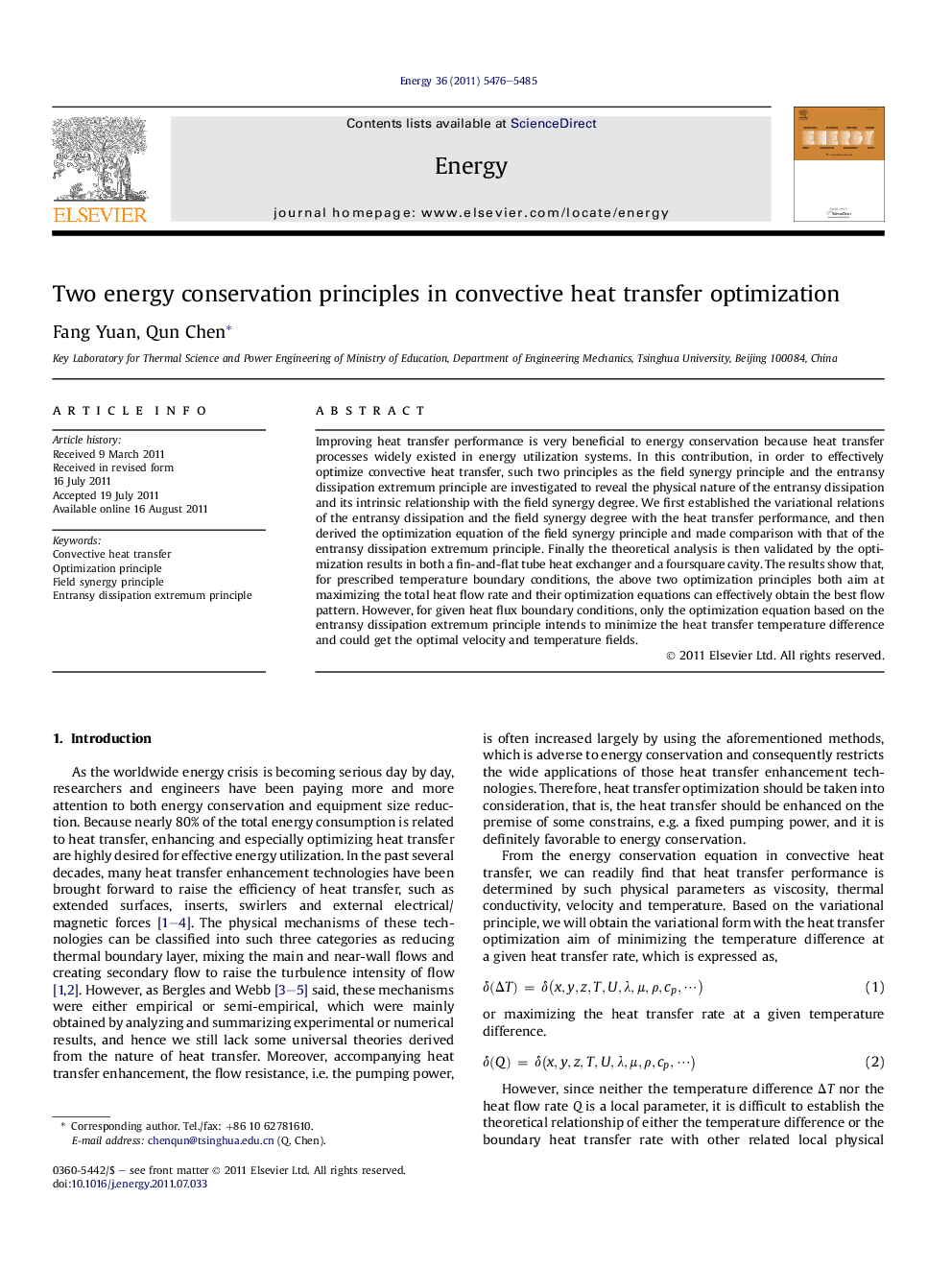| کد مقاله | کد نشریه | سال انتشار | مقاله انگلیسی | نسخه تمام متن |
|---|---|---|---|---|
| 1734569 | 1016159 | 2011 | 10 صفحه PDF | دانلود رایگان |

Improving heat transfer performance is very beneficial to energy conservation because heat transfer processes widely existed in energy utilization systems. In this contribution, in order to effectively optimize convective heat transfer, such two principles as the field synergy principle and the entransy dissipation extremum principle are investigated to reveal the physical nature of the entransy dissipation and its intrinsic relationship with the field synergy degree. We first established the variational relations of the entransy dissipation and the field synergy degree with the heat transfer performance, and then derived the optimization equation of the field synergy principle and made comparison with that of the entransy dissipation extremum principle. Finally the theoretical analysis is then validated by the optimization results in both a fin-and-flat tube heat exchanger and a foursquare cavity. The results show that, for prescribed temperature boundary conditions, the above two optimization principles both aim at maximizing the total heat flow rate and their optimization equations can effectively obtain the best flow pattern. However, for given heat flux boundary conditions, only the optimization equation based on the entransy dissipation extremum principle intends to minimize the heat transfer temperature difference and could get the optimal velocity and temperature fields.
► Compare the field synergy (FSP) and entransy dissipation extremum (EDEP) principles.
► Optimize convective heat transfer processes based on the above two principles.
► Obtain the optimal flow and temperature fields theoretically for comparision.
► The EDEP is superior to the FSP because the FSP has more restrictions.
Journal: Energy - Volume 36, Issue 9, September 2011, Pages 5476–5485